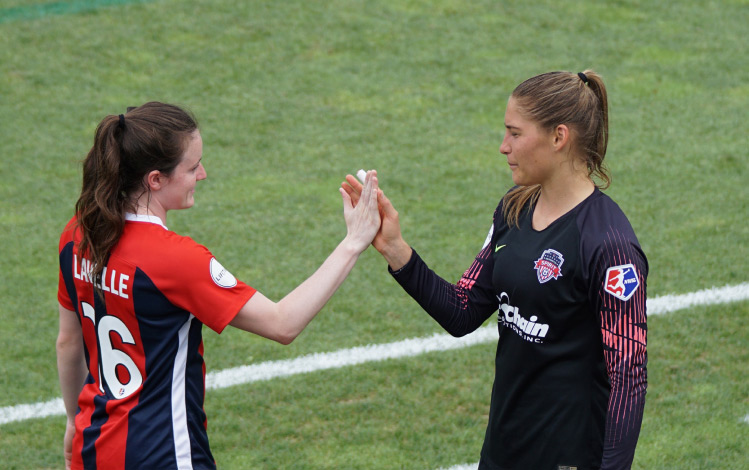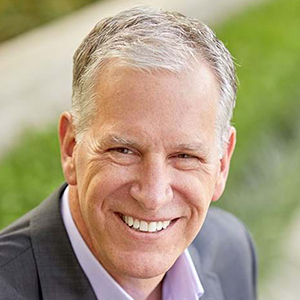

Survival of the Bravest
For Brands to Succeed, They Must Look to Their Employees First
On a Wednesday night in early October, fans at several National Women’s Soccer League games in the U.S. saw an unusual sight. At the six-minute mark of every game that night, players stopped play, locked arms in the center of the field, and stood silently for one minute. The sixth minute protest represented the six years it took for Paul Riley, a coach accused of sexual harassment by many players of multiple teams, to be kicked out of the league.
The NWSL is deep in the midst of an abuse scandal. While the league is home to some of the U.S.’s biggest female sports celebrities, like U.S. national team World Cup winners Megan Rapinoe and Alex Morgan, most of the positions of power — coaches, team owners, league executive seats — are occupied by men. That power imbalance bred a toxic and abusive leadership, which unfortunately wasn’t taken seriously for years. Now, four coaches have been sacked — including Riley and another who verbally and racially abused players — the league commissioner has resigned, front office executives have been forced to quit, and multiple investigations are forthcoming or underway. As a brand, the League has suffered incredible damage, and many are questioning whether it can (or should) survive.
Two players, Sinead Farrelly and Meleana “Mana” Shim, accused Riley of sexual misconduct going as far back as 2015. Six years is a long time to wait for action from management on such serious allegations. How did the league so badly bungle its response to players’ claims of abuse? In part, by placing its faith in the wrong stakeholders and refusing to muster up the courage to act.
Listening to the right stakeholders means listening to your employees
The leadership of the NWSL did not act bravely to safeguard their players. They not only allowed a culture of abuse to grow and thrive, but when players attempted to bring it to light, they circled the wagons around coaches, team owners and executives, shuffled abusers to different teams, and hushed up complaints in the hope that the problem would go away. Of course, they’re now finding that they made their problems worse, not better. They looked to the wrong stakeholders — the voices that spoke loudest to decision-makers, in this case male league leadership — and ignored the people who made their brand unique — players and fans.
The league’s actions were an unconscionable betrayal of their employees, who shouldn’t have to put their personal safety and mental health on the line when they come to work, and a betrayal of a core promise of their brand: building an inclusive league that supports women in soccer. Let’s be clear: I stand on the side of the players, as women, as employees of the league and as human beings who deserve better.
The idea that you can sweep your issues under the rug and not be transparent with your employees and stakeholders isn’t unique to sports leagues; it also holds true for brands. WE’s latest Brands in Motion report, “The Bravery Mandate,” surveyed consumers and B2B decision-makers about the courageous conversations brands need to have now, and how they can build enduring legacies that withstand the test of time. One of the big takeaways: As expectations rise and as audiences become more polarized, there are fewer and fewer “safe” middle ground options for brands. To differentiate themselves, brands and brand leaders must act bravely, taking stands on the societal issues that matter to their customers, employees and stakeholders, even when they know their stance won’t please everyone.
But taking these bold stances can be a big shift for brand communicators — after all, up until now it’s been our job to find the messaging that resonates with the greatest number of people. So what do we do when there is no safe approach?
Actions for purposeful employee engagement
It begins with brands working hard to find their internal bearings. The brands that understand where they and their customers are coming from will be able to act with agility and have the long-term vision necessary to stay the course.
Start on a solid foundation
Across most sectors, employees’ well-being is the No. 1 issue brands must address to be seen as purpose leaders. Brands should look to support their employees’ mental health and engage in local communities.
Remember that audiences see right through wishy-washy communications. Goldman Sachs’ CEO David Solomon, responding to concerns about overwork from U.S. and U.K. staff, said that leadership took work-life balance “very seriously” but also said that “if we all go an extra mile for our client, even when we feel that we’re reaching our limit, it can really make a difference in our performance.” Guess which soundbite media focused on.
Don’t tell, ask.
Your stakeholders expect near constant communication from you. Seventy percent of Brands in Motion respondents say executives should convey their personal positions with very high frequency — from “almost constantly” to every three months. But you can’t just point a megaphone and start talking. Your employees and your customers expect a dialogue where they can share what issues are important to them.
Deloitte looked to its U.K. employees to determine its return-to-office plans. After 96% of them said they wanted to choose their own work patterns, Deloitte was quick to adopt a hybrid model with the focus on employee flexibility — when COVID restrictions are lifted, employees will be allowed to work wherever they want.
Build on, not away from your core promise
Long-term single-issue investment is the best way to build credibility and endurance in your purpose. Seventy-two percent of respondents said they would rather see brands make long-term investments in one issue or cause rather than switch causes each year.
Most importantly, never betray the core values that brought audiences to your brand to begin with. This is a lesson oat milk producer Oatly, which has long marketed its product as a sustainable alternative to milk and milk substitutes, has learned the hard way. A report from an investment firm showed that Oatly’s production and supply chain may not be as green as the brand claims. Smelling greenwashing, investors have responded — since the report was published, Oatly’s stock price has plummeted, once hitting a post-IPO value 53% below its June 2021 high point.
Know when to speak
For your customers and stakeholders, speaking out well is an issue of your credibility. The world doesn’t need your brand’s hot-take on every issue that hits the headlines, but it does need leaders who can bring their expertise to relevant, pressing issues. For brand communicators, this should be a relief. You don’t have to take a stand on every single issue. You can focus on fewer things and achieve greater impact.
Stay the course
Focus on long-term commitments to initiatives that audiences can see, feel and touch, and DON’T attach yourself to the hot issue of the moment if it doesn’t make sense for your brand. Be ready to quantify and share your progress with stakeholders.
Deep engagement, purposeful commitment
I was heartened to see Brands in Motion back up what we’ve been saying for years — that a brand’s success begins with its employees. Just as without players, there is no National Women’s Soccer League, without your employees, you don’t have a brand. Putting your employees first and at the core of everything you do, speaking with them early and often, and finding new ways to connect with them is key. One thing COVID has clarified: Employees have gone from a stakeholder to your primary stakeholder, and it’s always a good time to do the right thing. Hopefully the NWSL will listen to its employees and act with courage to change its culture.
Employees, consumers and decision-makers all want deep engagement — listening, thoughtful action, and long-term investment in the societal issues and causes relevant to them. History is happening, and brands need to ask themselves — and their most important stakeholders, their people — which side they want to be on.
The latest blogs from WE
MNCs in China Must Prioritize Internal Communications
To Tell Your ESG Story, Think Digital
5 Ways Tech Will Reshape Culture in 2024


